Do you have plans to build your own loft and make some extra space in your home? More space inside a home is always a great thing, but make sure that you do not increase your carbon footprint and harm the environment in doing so. Many aspects should be looked into in order to ascertain that your loft is made in an eco-friendly manner and it does not affect the environment. Firstly, make sure that the material used for building the loft is sourced locally. Recycled materials or materials free from chemicals and toxic products should be used for constructing the loft. Opt for good quality insulation material for the walls and the roof, so that energy is saved in the loft and not wasted. Make provision for tapping renewable sources of energy like installing solar photovoltaic cells. It is important to utilize daylight optimally by making use of large windows that would ensure plenty of daylight during the day. It is always a good decision to go green, as you not only help the environment but also save a lot of money that is spent on energy costs otherwise. Here are six brilliant eco-friendly loft designs that can inspire you to recreate the same in your own homes.
1. Eco-friendly loft by Fernanda Marques Architects
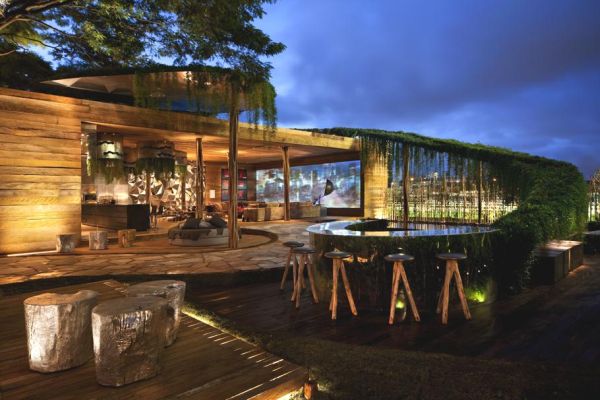
Fernanda Marques Architects created an eco-friendly loft for the Casa Cor 2010 Exhibit. This loft design stands out for its sustainability, which is undoubtedly the need of the hour. This loft house is covered on both the inside and the outside with recycled wood that gives it a country look. The home also has a green LED system to reduce the consumption of energy. Another striking green feature is that the pillars of the loft house are the original tree trunks from Bahia. The loft has floor to ceiling windows to make the most of daylight. Apart from all these green features, the home contains a lot of greenery in the form of vegetation as a tribute to nature. The most outstanding green feature of this loft house is that the pillars of the home are not made out of concrete, but are the original trunks of trees.
2 Green Penthouse loft by Joel Sanders
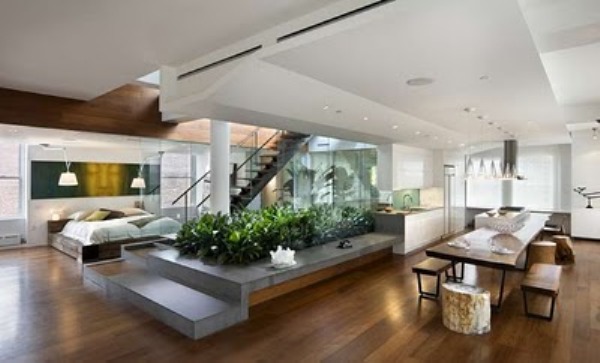
This amazing eco-friendly penthouse loft created by Joel Sandersis is called the Matthew Blesso loft. This 3200 sq ft loft is an amalgamation of two architectural designs of the landscape and the building, which makes it a natural architectural design. The interior of the loft is equally green as it is designed with a lot of natural fibers, woods, and vegetation. Plants grown inside the loft are what segregate various spaces inside the loft, making it truly a green design. The most striking green element of this loft is the way plants are used in the interiors to separate the various spaces inside the loft.
3. Modern loft design by Mosler Lofts
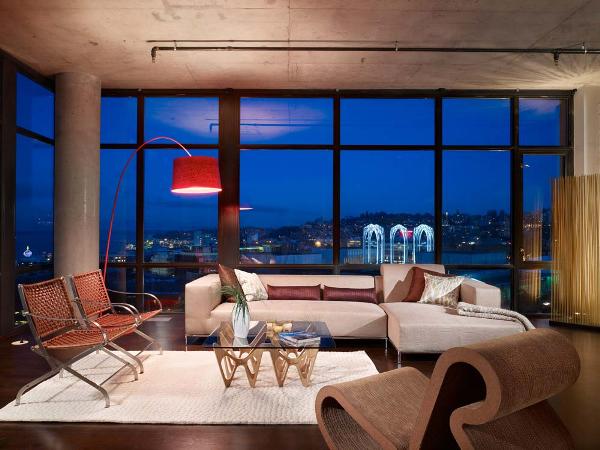
Most cities in the US have adopted the loft system as the new housing trend since space for living has to be created vertically as land is scarcely available and extremely expensive. Mosler Lofts are one such eco-friendly loft houses that are located near the historic city of Seattle in Washington State. The interiors of the loft comprise of many large glass windows that provide great outdoor views as well as abundant natural daylight. Apart from this, the designer has also made provisions for rainwater harvesting as well as the tapping of renewable solar energy. The rooftop of this loft house is predominantly used as a garden, while the remaining part is used for installation of solar panels. The most special green feature in this loft house is that there is a provision for harvesting rainwater for reusing it inside the water in flush tanks and watering of gardens.
4. Green solar-powered loft home

The latest concept of designing a green home is the concept of turning an old warehouse into a solar powered loft. This innovative idea is a part of an extensive project in which an old textile warehouse in San Diego has been turned into a stunning solar powered loft. Designed by Jonathan Segal, this green architecture makes optimal use of the 20 thousand square feet of space out of which 50 percent of the space receives its energy from solar power. This is a great way to reuse old and dilapidated building and turn them into sustainable loft dwellings. The most appealing feature of this loft design is the fact that an old building has been turned into an eco-friendly loft structure that can accommodate people and foster sustainable living.
5. Eco-Friendly Loft in Barcelona
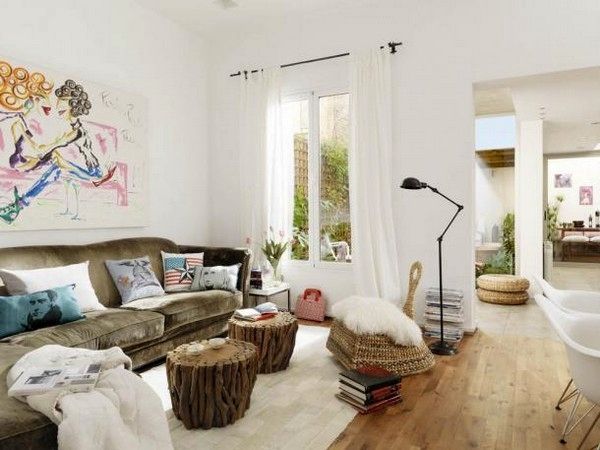
Studio Vuong have added another feather to their cap with this stunning loft home that they have created in Barcelona, Spain. This innovative loft is more like a sanctuary where you can rejuvenate your senses in a natural surrounding. The interiors of this design have well placed windows that brighten the atmosphere and give you a glimpse of the green terrace. The inside of the loft has white walls to give the impression of a big and airy house. This loft home makes use of windows in order to merge the green exteriors of the terrace with the interiors of the house, making the optimum use of daylight and green surroundings.
6. Solaleya Domes: Rotating UFO-loft home
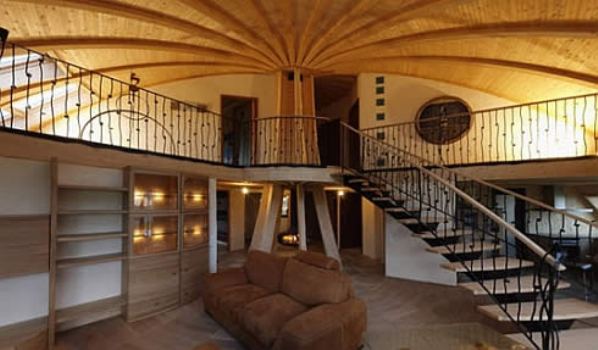
The Solaleya Dome is a rotating loft home that is shaped like a UFO. This environmentally friendly home is circular in shape and is fitted with a solar array and skylights on the top. These loft homes are constructed out of FSC-certified wood that is durable and has the capacity to withstand severe earthquakes and category 5 hurricanes. Solaleya’s dome loft homes are predominantly made out of wood and are insulated with a natural material cork. The roofs have large sky facing windows that fill the entire home with light. The home rotates at 360 degrees without using much energy. The rotation process enables the loft home to use daylight most efficiently and the solar panels on the roof absorb maximum sunlight on the rooftop. The Solaleya Dome loft home turns in a circular motion to ensure the maximum utilization of daylight and the solar panels on the roof absorb the maximum amount of solar energy for further use inside the home.



